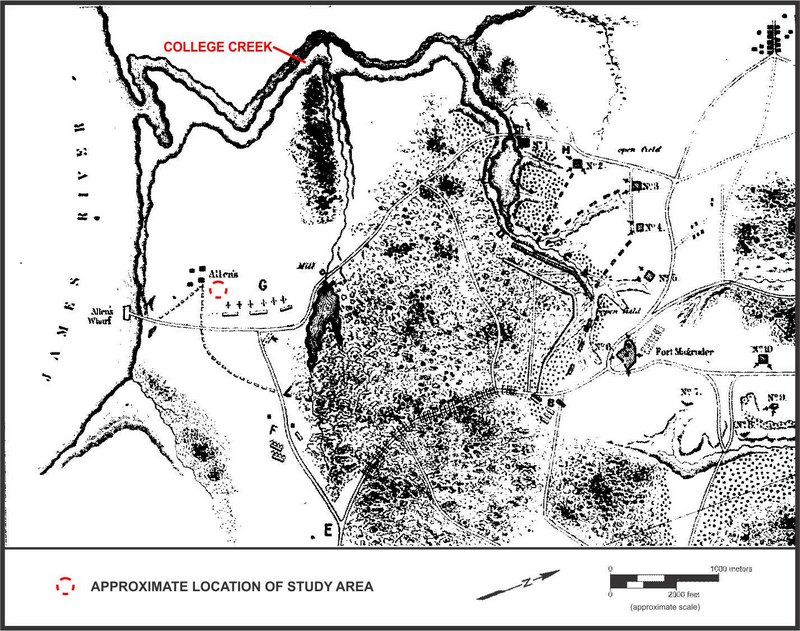|
For nearly three months in the summer of 1861, companies of the 15th Virginia Infantry occupied Camp Adams near the Kingsmill wharf, only a few hundred yards from Site 44JC1140. During the Peninsula Campaign (map to right) in the spring of 1862, Kingsmill was on the fringes of intense combat. On May 5, Confederate forces under Gen. Joseph Johnston clashed with Gen. George McClellan’s Army of the Potomac along a defensive line of earthwork fortifications that stretched across the James-York Peninsula near Kingsmill (map lower right). By evening, the Confederates withdrew to the outskirts of Richmond. The armies fought a series of bloody battles near the Confederate capital, ending the campaign with a Union withdrawal after the July 1 Battle of Malvern Hill.
After the Union Army pulled back, Williamsburg marked the western extent of its control on the Peninsula for the remainder of the war. As a front line position, the Union outpost was vulnerable to Confederate raids. The notations “U.S.P.” (highlighted in yellow on map below) mark the locations of “U.S. Pickets” or guard posts. With a James River wharf and connecting road to Williamsburg, Kingsmill was a key location to protect. The Union military presence at Site 44JC1140 may represent small units of guards posted at Kingsmill from 1862 to 1865.
|


